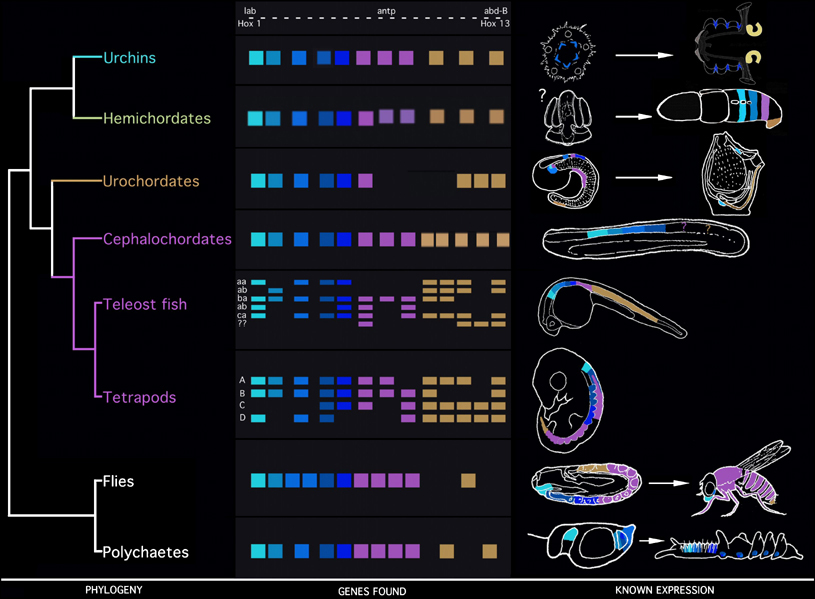A fish caught known as Crocodile fish or icefish in Antarctic waters by the Norwegian expedition in 1927 tells us another fascinating story on evolution of life.
Birth and Death of Genes is one of the four educational videos Sean Carroll has produced for communicating biological evolution to public with the support of HHMI.
These fishes (called Nothothenoids) are unique for they are the only vertebrates in the world that lack the oxygen-binding protein hemoglobin, which gives blood its red color. They have evolved a different oxygen binding protein that works optimally in freezing conditions. Under freezing conditions, an icefish swimming in the waters of the Southern Ocean has about one and one-half times more oxygen in its blood plasma than a fish in the coast of California.
In Birth and Death of Genes, we learn how this extraordinary character began evolving 34 million years ago by gene duplication in the pancreatic trypsinogen gene. The end of the first intron and beginning of the second exon in the gene has tandemly duplicated 41 times and resulted in the anti-freeze glycoprotein (AFGP). The ancestral trypsinogen gene lost four of its exons in the middle but retained the first and last ones. The last exon later fused with tandemly duplicated introns and became a single exon through a frameshift mutation. Thus evolved the bi-exonic icefish AFGP.
Antarctic icefish (Dissostichus mawsoni) and Arctic northern cods (Boreogadus saida) are evolutionarily and geographically distant species. Convergently, both evolved genes coding very similar AFGPs.
Genes can duplicate in many ways and even entire genomes can duplicate forming an effective means to create variation. Gene duplication played an immensely critical role in evolution of body plans across animal kingdom.
Before tiring you with the paragraph below pay attention to teleost fishes and tetrapods (all land invertebrates) and see how duplications of Hox genes created a rich source for variation. This is how fins became limbs.
The Hox gene cluster is duplicated in vertebrates. There are eight Hox gene clusters in teleost fishes, showing an additional duplication from the four Hox gene clusters found in the tetrapod vertebrates. In contrast, the invertebrates (urchins, tunicates, flies and Polychaetes) each have a single cluster. Ascidians lack some of the middle Hox genes, and the cluster is broken up onto two chromosomes. Echinoderms and hemichordates share an independent duplication of the posterior genes, called Hox 11/13a, Hox 11/13b and Hox 11/13c. Hemichordates show anterior to posterior expression in the ectoderm, which will produce a nerve net later in development. Echinoderms (urchins and seastars) show adult expression in the nerve ring with the oral side corresponding to anterior in chordates and hemichordates.
Take genes that encode olfactory receptors, which receive stimuli in the nose to allow us to detect smells found on chromosome 11 in humans. Genes that increased their diversity by duplication is now eroding since the selective pressures that lead to the evolution of those genes have changed in recent times. About 60% of our smell receptors are nonfunctional. Presumably, humans have less need for smell in locating food and interacting socially. The mutations that inactivate many receptors vary among people, meaning that there is a DNA basis for the observation that some people can smell better than others. It also suggests that the loss of smelling acuity has occurred very recently in human evolution and is still ongoing.
If you want to learn more about the molecular nature of living bodies you can visit the Central Dogma and Origins of life. Finally, the following is an artists abstraction of Hox genes:
HOX from pinar yoldas on Vimeo.




4 Comments